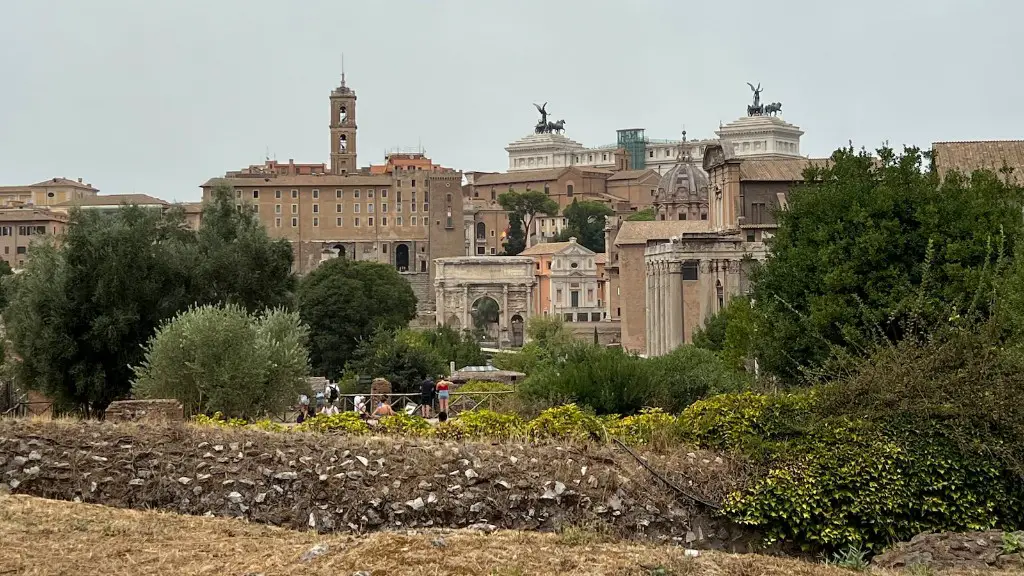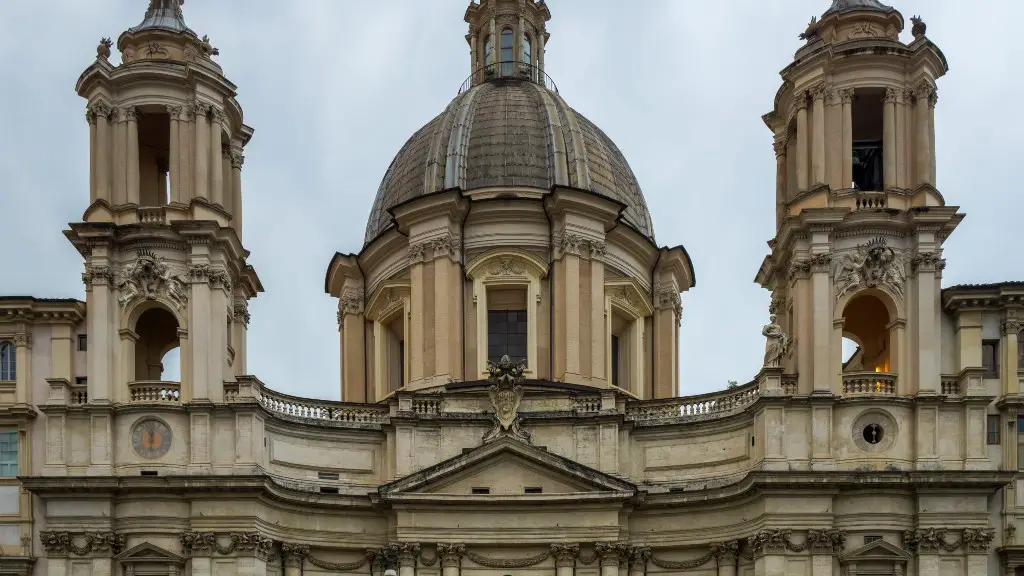Purpose of the Baths
The baths in ancient Rome were multifunctional centres that served as places of leisure and recreation, spiritual cultivation, and commercial activity. It is thought that the use of the baths was an integral part of daily Roman life, and these spaces were essential to the public culture of Rome. The baths were an easy way for Romans to relax and enjoy themselves. The purpose of the baths was not just for invigorating the body and soul; it was also a social outlet for Roman citizens.
In addition to providing rest and respite for the citizens, the Roman baths became an important part of the political and social life. According to historian Fergus Millar, the baths were used as an extension of the forum, an area for public debate and higher-level discussions. This was a prominent trait of the baths during the Roman period, and it is likely that the baths were intended to be more than just a recreational centre.
Types of People Who Used the Baths
The baths in ancient Rome were used by all types of people, from the Emperor and his court to the everyday working class citizen. Rich and powerful people often made use of the more exclusive and luxurious areas. At the same time, poorer citizens also enjoyed the baths, albeit in more modest and less luxurious surroundings.
The men of Rome were the most frequent users of the baths, especially those in the upper classes. These citizens often used them for leisure purposes, such as conversation or philosophical debate, or for spreading information about the political issues of the day. Women rarely used the baths in public, though it is thought that they used them sometimes in more private settings, such as in the home or in separate women-only baths.
Activities at the Baths
The Roman baths were places for socializing and leisure, but there were also activities for those who sought physical fitness or pleasure. The baths contained facilities for swimming, a type of fitness equipment called a “palestra”, and other games like ballgames and dice games.
The baths were also places of entertainment, with various stage performances and shows, as well as readings and music performances. They also contained libraries, shops, and art galleries. They were an attraction in and of themselves, and they provided amenities that could appeal to all types of citizens.
Benefits of the Baths
The baths played an important role in ancient Roman culture and economy. In addition to providing a much-needed source of entertainment and leisure, and fulfilling the spiritual needs of citizens, the baths had several practical functions.
The Roman baths were designed to be luxurious. At the same time, they were also designed for efficiency of movement and maximum utilization of the limited space available. The baths served as a sort of hub of the city and were connected to the streets by public transport networks. This allowed for people to travel easily to the baths and back.
The baths also provided a location for public works, such as baths and sewers, and also served a regulatory purpose. Citizens were able to access hygiene and sanitation resources, which were essential for the health of citizens.
Fashion at the Baths
The baths were a place to relax and show off one’s fashion and style. As such, they were a major focal point of social identity among the citizens of Rome. Since the baths were seen as places of leisure, they provided an opportunity for those of lower classes to show off their wealth and have a sense of belonging.
The Romans had a specific fashion that was associated with the baths. It is suggested that they wore light-colored tunics called ‘balteus’, as well as loin-cloths, shorts, sandals, and slippers. Hair was usually cropped short, and people would often wear hats or headgear to protect from sunburn.
Health Benefits
The use of the baths was beneficial for both mental and physical health. For example, people could use the warm baths for therapeutic and relaxation purposes, or for healing body ailments such as rheumatism. Taking part in exercise or sports activities such as ballgames and swimming, were also beneficial for fitness and overall health.
In addition to physical health, the Roman baths had a positive effect on mental health. As historian Fergus Millar notes, they provided a space for socializing and mingling with others which was invaluable during the Roman period. Taking part in the activities at the baths was an effective way to relieve stress, which was especially important for the hand-working citizens.
Economic Effects
The Roman baths had a tremendous impact on the economy of ancient Rome. Businesses were able to use the baths for their own purposes, such as offering services or selling goods. In addition, taxes from the baths allowed the Roman state to fund public works. This was essential for maintaining the prosperity of the Roman Empire.
The baths were also a source of employment, with thousands of people working as slaves and labourers to maintain the facilities and provide services to the bath-goers. This allowed for thousands of Roman citizens to find jobs, which contributed to the enormous growth of the Roman economy.
Spiritual Impact
The baths were seen as places of spiritual renewal, and it is often said that the Roman Empire was founded on the belief that it was a civilisation that could provide spiritual relief to its citizens. It is believed that many Romans visited the baths to take part in spiritual purification rituals, or to obtain spiritual guidance from religious professionals such as priests and oracles.
The baths were also important venues for gathering, and it is likely that spiritual events such as mystery cults and festivals were held here. The baths provided an area for spiritual contemplation, and for communing with the gods and goddesses. In this way, the baths played an important role in the religious life of the Roman Empire.
Hygiene and Sanitation
The Roman baths were designed not only for leisure and relaxation, but also for utility and sanitation. The baths were designed to provide a place for citizens to bathe and to access clean water. In addition to this, the baths provided improved sanitation with separate cisterns for fresh and waste water.
The baths also provided an abundance of soap and other items necessary for good hygiene, such as razors and combs. This allowed citizens to follow good hygiene practices and to maintain a healthy lifestyle. The importance of hygiene and sanitation should not be underestimated, as it played a significant role in preserving the health of the Romans.
Marketing and Advertising
The Roman baths were a major source of commission for ancient advertisers and marketers. Paintings, inscriptions, and statues were used to promote bath-goers about the benefits of the baths, as well as to advertise special events and promotions.
These advertisements helped to boost the popularity of the baths, and to draw in more visitors to these public spaces. The marketing strategies used by the Romans were highly effective, and it is likely that the use of advertisement and marketing had a direct impact on the popularity and success of the Roman baths.
Conclusion
The baths in ancient Rome were essential to the public life of Rome, and were used by all types of people, from the Emperor and his court to the everyday working class citizens. They served both practical and leisure functions, ranging from providing a source of entertainment and spiritual rejuvenation, to a place where people could gather to discuss topics such as politics and philosophy. In addition, the baths provided much-needed resources for sanitation and hygiene, and allowed the Roman state to fund public works. Finally, the baths provided opportunities for marketers and advertisers, and helped to boost the popularity and success of the Roman baths.


